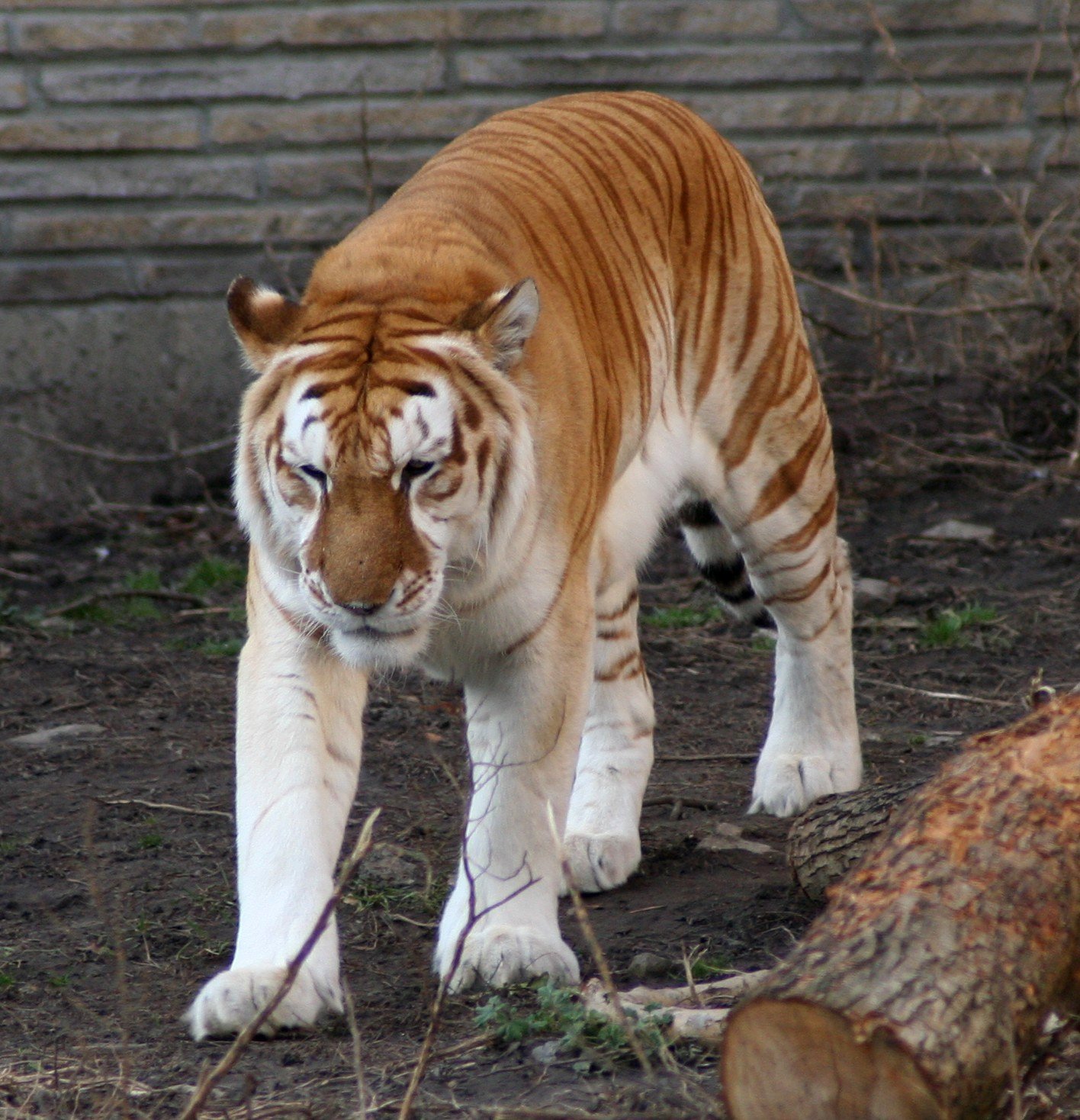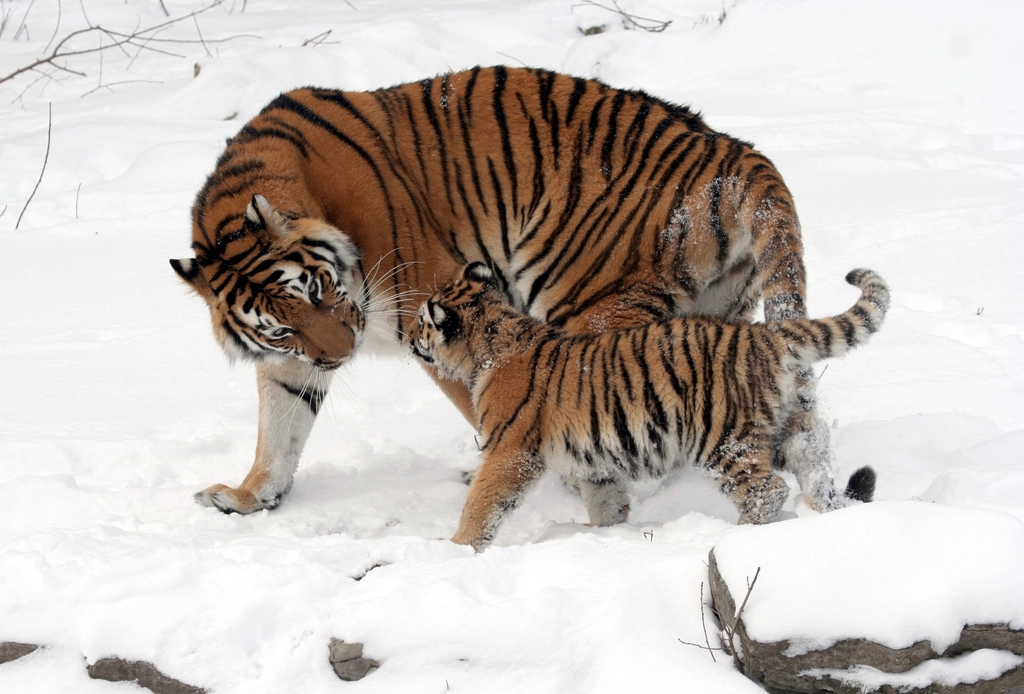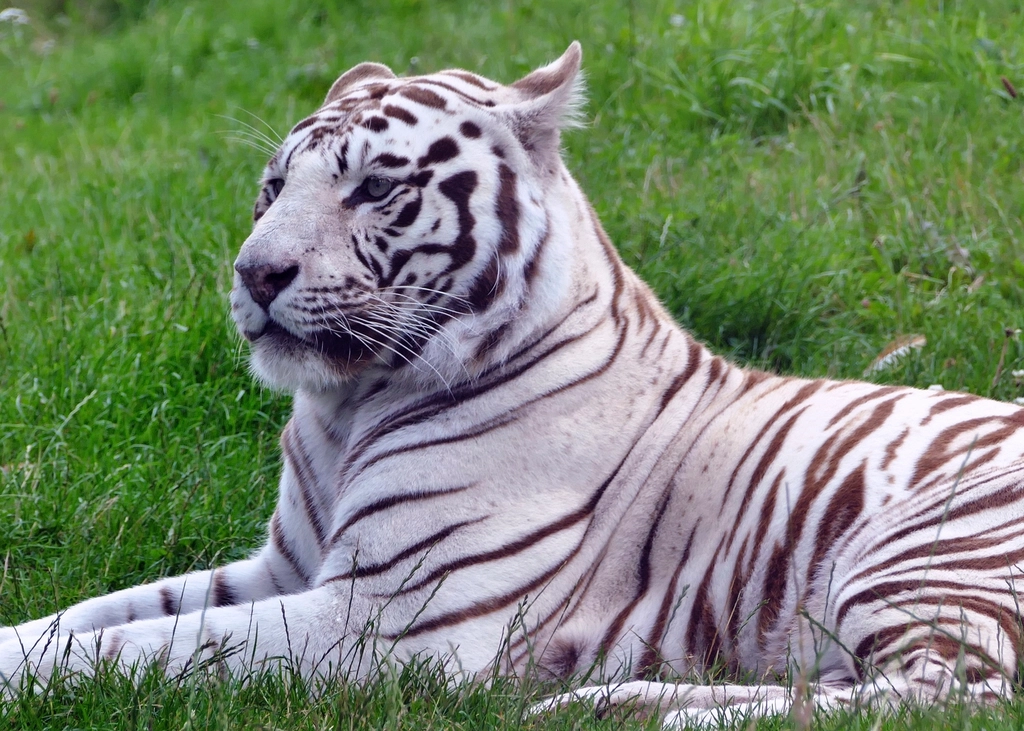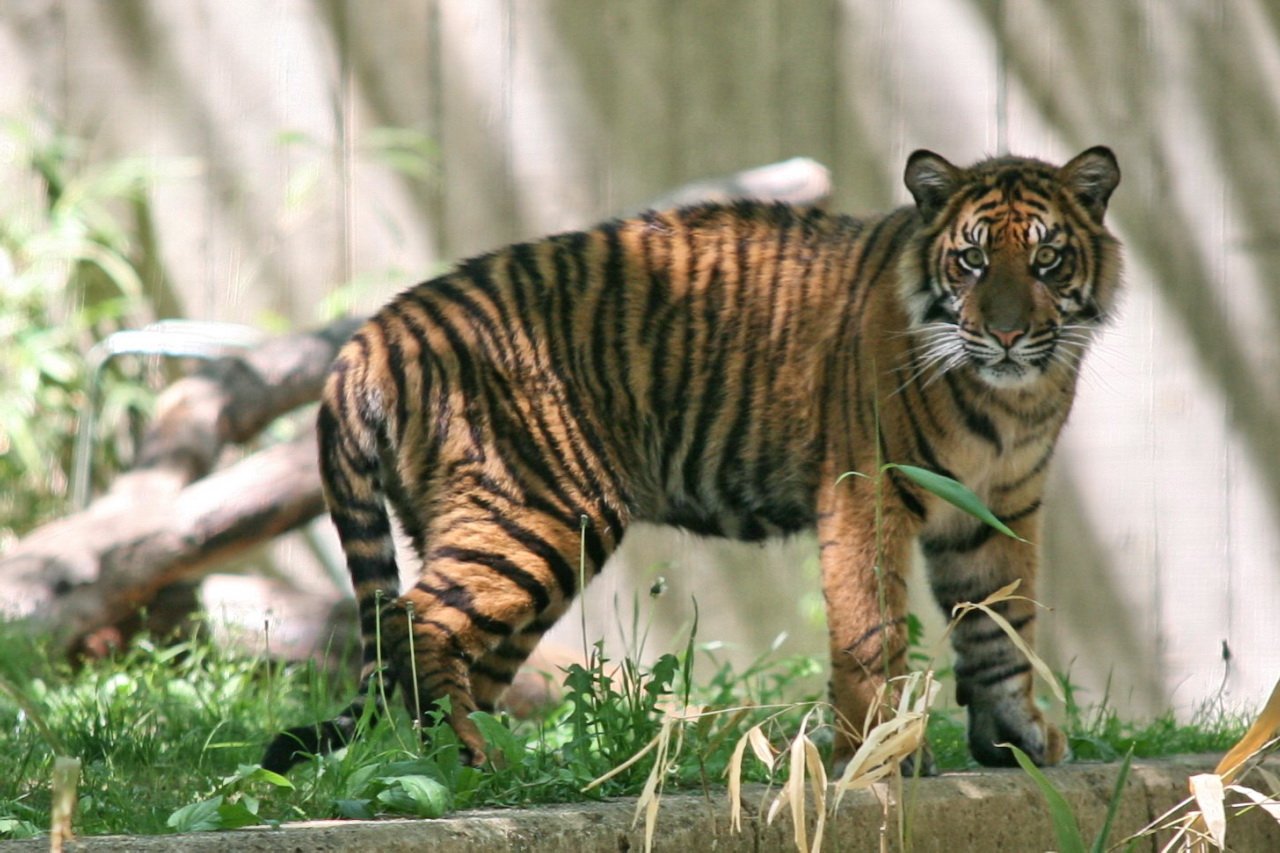Think you know tigers? Think again! These mesmerizing big cats are full of surprises, and their stripes are just the beginning. From their quirky personalities to jaw-dropping skills, tigers have wowed the world in ways that’ll make you smile, gasp, and maybe even wish you could hug one (spoiler: don’t try it). Get ready to fall in love with the tiger—one wild fact at a time!
Tigers Are Fantastic Swimmers—Bath Time Is Playtime!

Unlike most house cats who avoid water at all costs, tigers relish a good dip. They’ll swim for miles, even crossing rivers with ease. Pools and ponds are their playgrounds, especially on hot days. If you ever see a tiger doing the backstroke, don’t be shocked—it’s just another day in paradise!
They Roar Loud Enough to Rattle Your Bones

A tiger’s roar can be heard up to two miles away! It’s not just for scaring off rivals—this thunderous call is their way of saying, “I’m here!” up and down the jungle. Think of it as their version of a megaphone, only way scarier and much more impressive.
Tigers Have Secret “Invisibility Cloaks”

Those stripes aren’t just for show—they’re camouflage! The bold patterns break up their outline in tall grass and dappled forests, letting them sneak up on prey like furry ninjas. Next time you see a tiger, imagine trying to spot one in the wild. It’s not as easy as you’d think!
Some Tigers Are Born Without Stripes

Ever heard of a “golden tiger”? These rare beauties have pale fur and faint or no stripes, thanks to a genetic quirk. They look like giant, golden house cats—if your house cat could weigh 400 pounds and leap over a fence in a single bound.
Tigers “Chuff” to Say Hello

Tigers greet each other with a charming sound called a “chuff”—a kind of breathy snort that’s surprisingly cute. It’s their version of a friendly hello, showing affection or peace. If only people could chuff instead of awkward handshakes!
They Can Leap Like Olympic Athletes

Need to clear a fence? No problem for a tiger—these powerful cats can leap over 10 feet high and cover up to 30 feet in a single bound. That’s like soaring across a swimming pool or vaulting over a small car with ease. Their explosive strength and agility make them some of the most formidable hunters in the animal kingdom. When a tiger decides to pounce, there’s little chance of escape.
Tiger Moms Are Fiercely Devoted

Mother tigers are the ultimate solo parents—dedicated, fierce, and incredibly resourceful. For up to two years, they raise their cubs alone, patiently teaching them how to stalk, hunt, and even swim. Every day is a survival lesson, and mom is both teacher and protector, ready to risk her life to defend her young. In the wild, being a “tiger mom” is the mark of true strength and devotion.
Tigers Love To Play With Their Food

Before diving into their meal, tigers often engage in a curious ritual—batting, tossing, and rolling their catch around like a giant toy. While it may look like play, it’s actually valuable practice that sharpens their reflexes and reinforces hunting instincts. This behavior blends skill-building with instinctual behavior, turning dinner into a game of tag and hide-and-seek. For a tiger, even mealtime is a chance to stay sharp.
They Have Their Own Scented Highways

Tigers are masters of marking their turf, using deep claw scratches and a pungent spray to leave unmistakable messages. These “scented signposts” communicate everything from boundaries to mating status, warning others to stay away—or come closer. It’s their wild version of social media, only far smellier and way more personal. In the tiger world, a post doesn’t go unnoticed!
White Tigers Are Real, and They’re Stunning!

White tigers aren’t albino—they’re Bengal tigers carrying a rare recessive gene that gives them their stunning snowy coats and piercing blue eyes. Their unusual appearance makes them look almost mythical, like creatures from a storybook. But beneath that magical look, they’re every bit as powerful, stealthy, and wild as their orange-striped relatives. Beautiful or not, a white tiger is still a top predator through and through.
Tigers Have Unique “Fingerprints”

Every tiger’s stripe pattern is completely unique, much like a human fingerprint. These one-of-a-kind markings help scientists and conservationists identify and track individual tigers in the wild. No two tigers wear the same “coat,” making their stripes a built-in ID badge. It’s like nature’s version of wearing your identity on your skin—bold, beautiful, and unmistakably personal.
They Can Mimic Other Animals

Tigers are not just powerful hunters—they’re clever impersonators too. Sometimes they mimic the calls of their prey, like deer, to draw them in for a deadly surprise. It’s a masterful trick of deception, turning their voice into a hunting tool. Who knew these stealthy cats had such sneaky vocal talents hidden behind that roar?
Tigers Show Their Feelings With Their Tails

A tiger’s tail is like a furry mood ring, giving away its inner emotions. A quick swish often signals excitement or alertness, while a slow, deliberate wag can mean annoyance or agitation. Cubs love to bat at and chase each other’s tails, turning them into playful toys during their rough-and-tumble games. So the next time you spot a tiger’s tail in motion, you’re getting a glimpse into its wild mood!
They’re Solo Superstars—No Packs Here!

Unlike their social lion cousins, tigers are true loners, thriving in solitude and fiercely guarding their own space. They roam vast territories alone, using scent marks and scratches to signal, “this land is taken.” Tigers typically come together only for mating or when a mother is raising her cubs. In the feline world, they’re the ultimate introverts—independent, elusive, and perfectly content on their own.
Tiger Cubs Are Playful Trouble-Makers

Tiger cubs are nonstop bundles of energy, spending their days chasing tails, pouncing on siblings, and tumbling through the grass. While their playful antics may look adorable, they’re actually hard at work building the strength, coordination, and instincts they’ll need to thrive in the wild. Every game is a lesson in stalking, ambushing, and defending. For these young tigers, playtime is serious preparation for life as top-tier predators.
Tigers Can See in the Dark

Thanks to specialized cells in their eyes, tigers have night vision that’s about six times better than a human’s. This incredible ability lets them move with confidence and precision in near-total darkness. While most animals are fast asleep, tigers are silently prowling through the jungle, making the night their perfect hunting ground. In the dark, the striped predator truly comes to life.
Some Tigers Share Meals—But Only With Family

Tigers may be fiercely territorial, but mother tigers show a surprisingly tender side when it comes to family. They willingly share their kills with their cubs—and sometimes even with older, independent offspring. It’s one of the few times you’ll see tigers gathered in peace, enjoying a rare “family dinner” in the wild. Beneath all that power lies a moment of connection and care.
Tigers “Whisker” Messages to Each Other

A tiger’s long, sensitive whiskers do more than just help navigate the dark—they’re also key to expressing emotion. When a tiger pushes its whiskers forward, it signals curiosity, alertness, or even aggression, especially during a hunt. Pulled back against the face, they usually indicate calm or contentment. Think of them as a built-in, fuzzy mood meter—reading a tiger’s whiskers can tell you a lot about what it’s feeling!
They Can Eat Up to 90 Pounds in One Sitting

When it’s time to eat, tigers go all in—an adult can chow down on up to 90 pounds of meat in one sitting! That’s the rough equivalent of scarfing 360 hamburgers in one go. With an appetite like that, it’s no surprise they often follow up with an epic nap to digest. In the wild, a tiger’s feast is a serious event—and definitely not a light snack!
Tigers Are Nature’s Silent Stalkers

Despite their massive size and power, tigers are masters of stealth. Specially adapted soft pads on their feet muffle every step, allowing them to move through the jungle with ghost-like silence. This built-in “sneaker” system lets them get incredibly close to their prey before launching an attack. It’s the ultimate stealth mode—silent, smooth, and deadly.
Tigers Have “False Eyes” on Their Ears

Look closely at a tiger’s ears and you’ll spot a clever detail—white spots on the back that resemble eyes. These “false eyes” are thought to serve multiple purposes: they may confuse or deter potential attackers approaching from behind, and they might also help reassure cubs by giving the illusion that mom is still watching. It’s a small feature with big survival benefits, adding to the tiger’s toolbox of clever adaptations.
They’re the Largest Wild Cats on Earth

Tigers are the undisputed heavyweights of the cat world, with some males weighing in at over 600 pounds. Picture your average house cat—then super-size it into a muscle-packed predator built for strength and stealth. Their sheer size, combined with agility and power, makes them one of the most formidable hunters on Earth. Majestic and massive, tigers truly rule the wild like feline giants.
Tigers Use Trees as Giant Scratching Posts

Ever seen a house cat scratch the couch? Tigers do the same thing—just on a much bigger scale, using trees instead of furniture! When they scratch, they leave behind visual marks and scent from glands in their paws, sending a clear message: this territory is taken. It also helps keep their massive claws sharp and ready for action. Call it wild grooming with a side of property rights!
Tigers Have Been Symbols of Power for Centuries

Across Asia, tigers have long symbolized strength, bravery, and royal power. They appear in ancient myths, folklore, and art as fierce protectors and noble warriors, commanding respect wherever they roam. Even today, tigers inspire everything from national emblems to sports team mascots. With their commanding presence and legendary status, it’s easy to see why they’re called the true kings of the jungle.
Tigers Can “Talk” With Their Eyes

A slow blink from a tiger is like a quiet “I trust you,” often shared between mothers and cubs or relaxed individuals. This subtle, gentle gesture reveals a softer side to these powerful predators—one rooted in bonding and affection. It’s a rare glimpse into their emotional world, showing that even the fiercest cats have tender moments. In the language of tigers, a slow blink speaks volumes.

Suhail Ahmed is a passionate digital professional and nature enthusiast with over 8 years of experience in content strategy, SEO, web development, and digital operations. Alongside his freelance journey, Suhail actively contributes to nature and wildlife platforms like Feline Fam, where he channels his curiosity for the Feline into engaging, educational storytelling.
With a strong background in managing digital ecosystems — from ecommerce stores and WordPress websites to social media and automation — Suhail merges technical precision with creative insight. His content reflects a rare balance: SEO-friendly yet deeply human, data-informed yet emotionally resonant.
Driven by a love for discovery and storytelling, Suhail believes in using digital platforms to amplify causes that matter — especially those protecting Earth’s biodiversity and inspiring sustainable living. Whether he’s managing online projects or crafting wildlife content, his goal remains the same: to inform, inspire, and leave a positive digital footprint.






